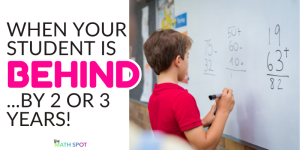In my math room there is one question, far and away, that I ask more often than any other. I’m not talking about a question or prompt such as “Could you show that to me in another way?” or “Why do you think that works?” those questions could be used in any classroom at any grade level in any subject.
I’m talking about a very specific MATH content question. I have been asking my first graders from the first day of school and I will continue up to the last.
It’s quite simple. I draw a plus sign (or a minus sign) on the board and I ask “What is this? What do we say when we read it? WHAT DOES IT DO TO NUMBERS?” I ask this question day in and day out. I ask it when we are learning a new strategy. I ask it when we are practicing an old strategy. I ask this question to death. And there is an important reason why.




